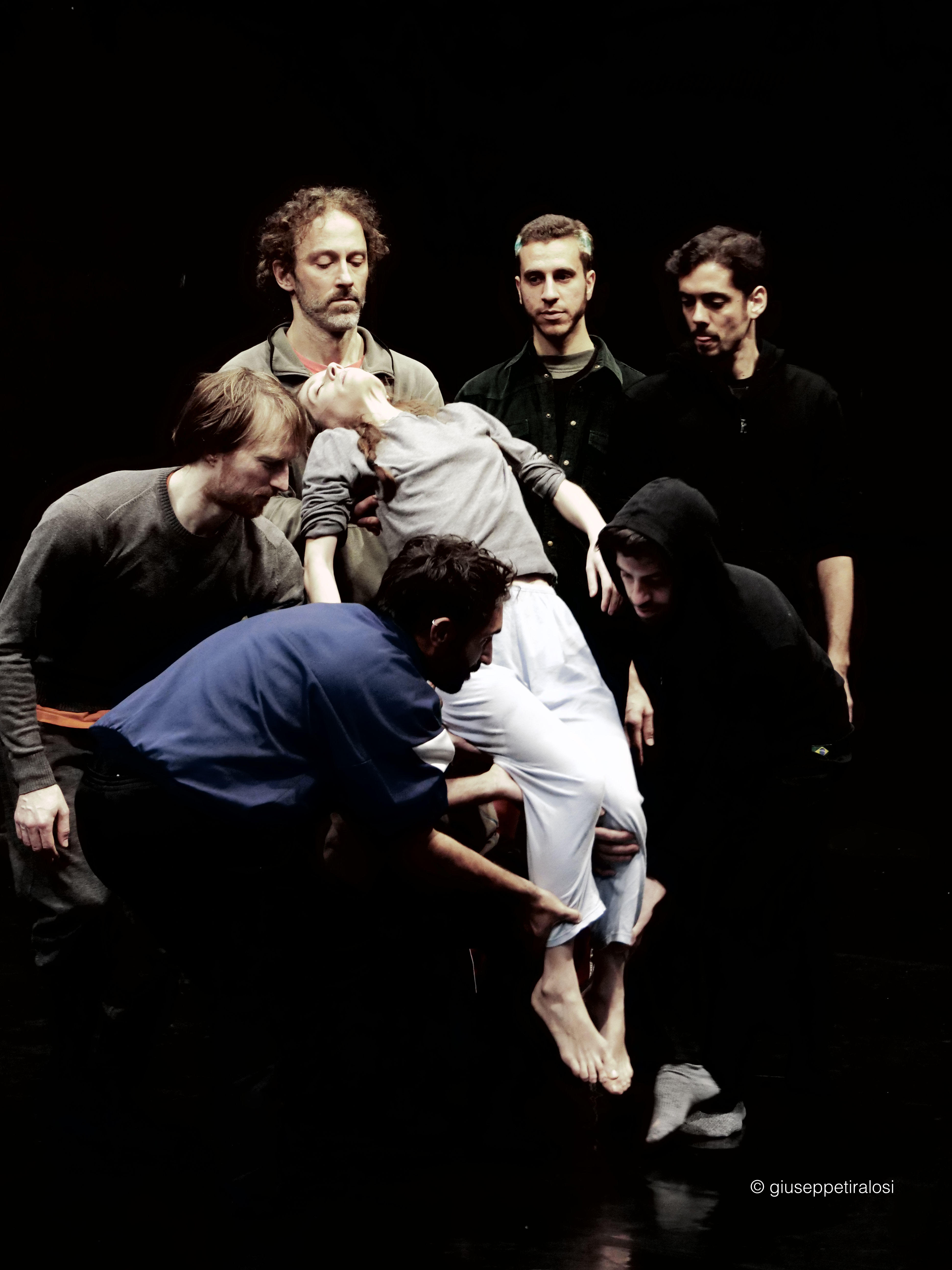REVIEW
A.semu tutti devoti tutti? shows the relationship with religion, the individual’s belonging to the community in devotion, balanced between ostentation and spirituality, and belonging to popular traditions and fanaticism. Except for the figure of Saint Agatha, represented by the naked body of a female dancer, the choreographer’s choice is to entrust movement to an ensemble of dancers. The male energy is expressed through choreographic moments of violent physicality and fierce opposition. Supremacy and prevarication of gender, but also manipulation of a symbol: the woman as an icon of sanctity, supported by the group, rolls on a carpet of male arms that replace each other to support her in her immobility.
Dry and carnal bodies, seven male dancers (Adriano Coletta, Alain El Sakhawi, Alberto Gnola, Salvatore Romania, Antoine Roux-Briffaud, Fernando Roldan Ferrer, Massimo Trombetta), and a woman (Valeria Zampardi) seem to have come out of a mystical exhibition and allow us to observe even the smallest details that are generally not appreciable in streaming, thus giving a surprising scenographic impact capable of creating a qualifying suggestion. A strong scenographic reference to the story of the martyr, whose breasts were torn off, is made by long strings of bras tied one to the other, on which the saint’s body hangs, unreachable, while images of football fans scroll across the screen. A powerful iconographic contrast.
The music alternates rock songs with the deliberately disturbing sounds of the group Lautari. Thus, in a place of fiction and representation of belonging to the community, the redemption of the individual is outlined. The starting point is the procession, the saint, the celebration, the waiting, the preparations and the surroundings: the images represent faith but also the unspoken. A sudden light floods the stage and evokes this world to original music and pieces by Dire Straits, Rosario Miraggio, Gustav Mahler, and Burt Bacharach with a tribute to Carmen Consoli.
It is worth noting the careful scenic and lighting work by Roberto Zappalà himself, with costumes by Marella Ferrera and Roberto Zappalà , on texts by Nello Calabrò. The dancers interpret a clearly recognisable style; slow sequences, silence, words, displays of dexterity, supported by a live band (Lautari: Giovanni Allegra, bass guitar / Puccio Castrogiovanni, strings, marranzani and harmonica / Salvo Farruggio, percussion / Peppe Nicotra, guitars), repertoire footage, and a staging created especially on the lights where white, purple, gold and red prevail, without neglecting black: a perception felt by our eyes reflecting dramaturgical nuances.
In the finale, the traditional white gloves (strictly this colour to signify promise, purity and adoration), waved by the devotees in greeting to the patron saint, are worn by the dancers with enchantment, an enthralling and powerful gesture, to leave room for the entrance on stage of Roberto Zappalà himself who summarises the story by reading a newspaper article about the “circle” rooted in the earth, but with thoughts turned to the sky. The image of the Saint metaphorically becomes the essence of two parallel worlds: the first legal and the second of malfeasance that tries to reconcile the high with the low.

